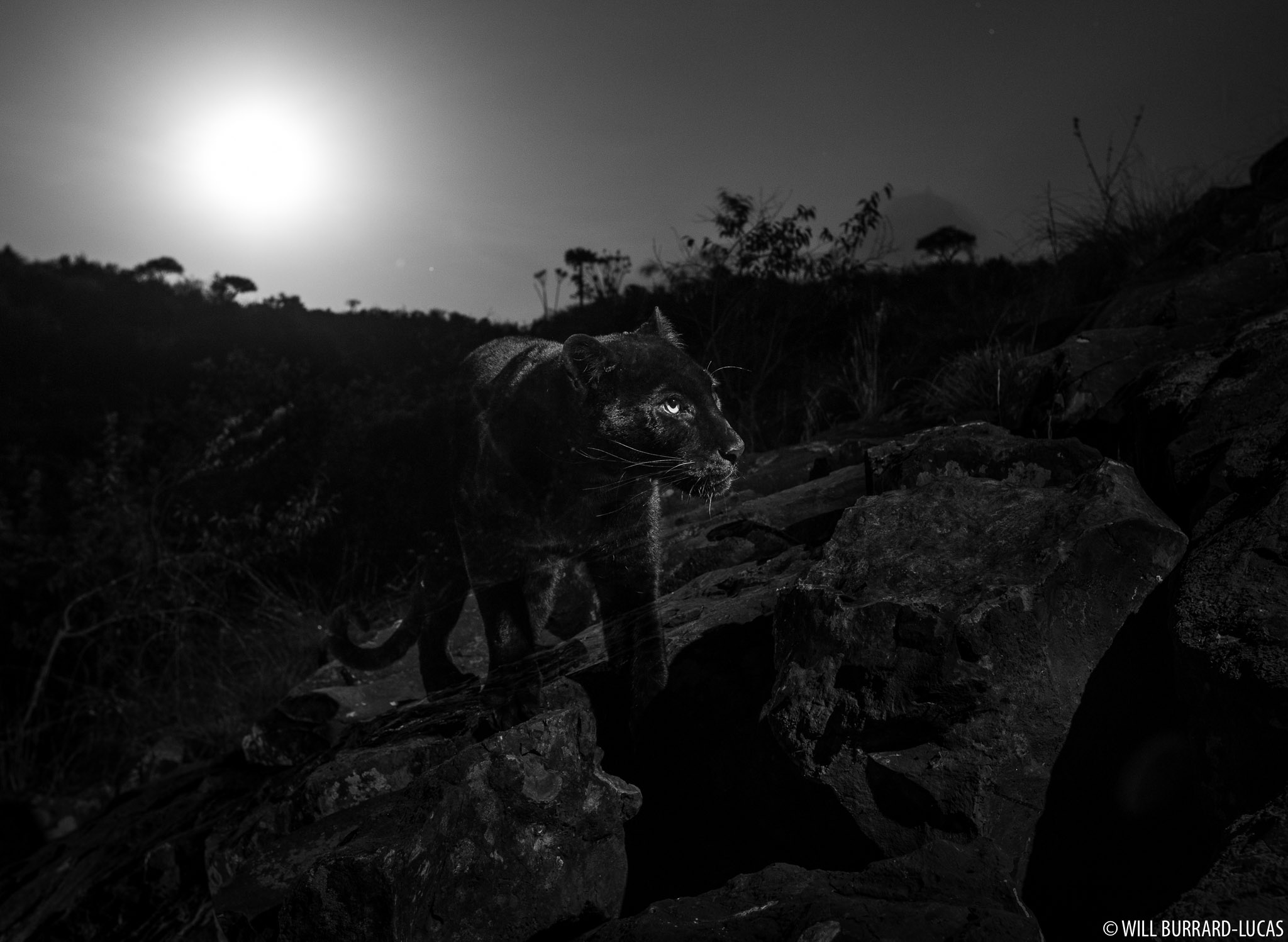As the light of day fades
the night shift awakes…
Nocturnal Wildlife
For me, the night is the last frontier in wildlife photography. There are many nocturnal species that have rarely been photographed, and the darkness provides a blank canvas to experiment with creative lighting.
Over the last 10 years or so, the lowlight ability of modern digital cameras has made it possible to photograph animals in darkness in ways that were not previously possible. For example, using a high ISO, I was able to capture this rare image of two aardvarks greeting each other in Botswana, just by the light of a dim spotlight.
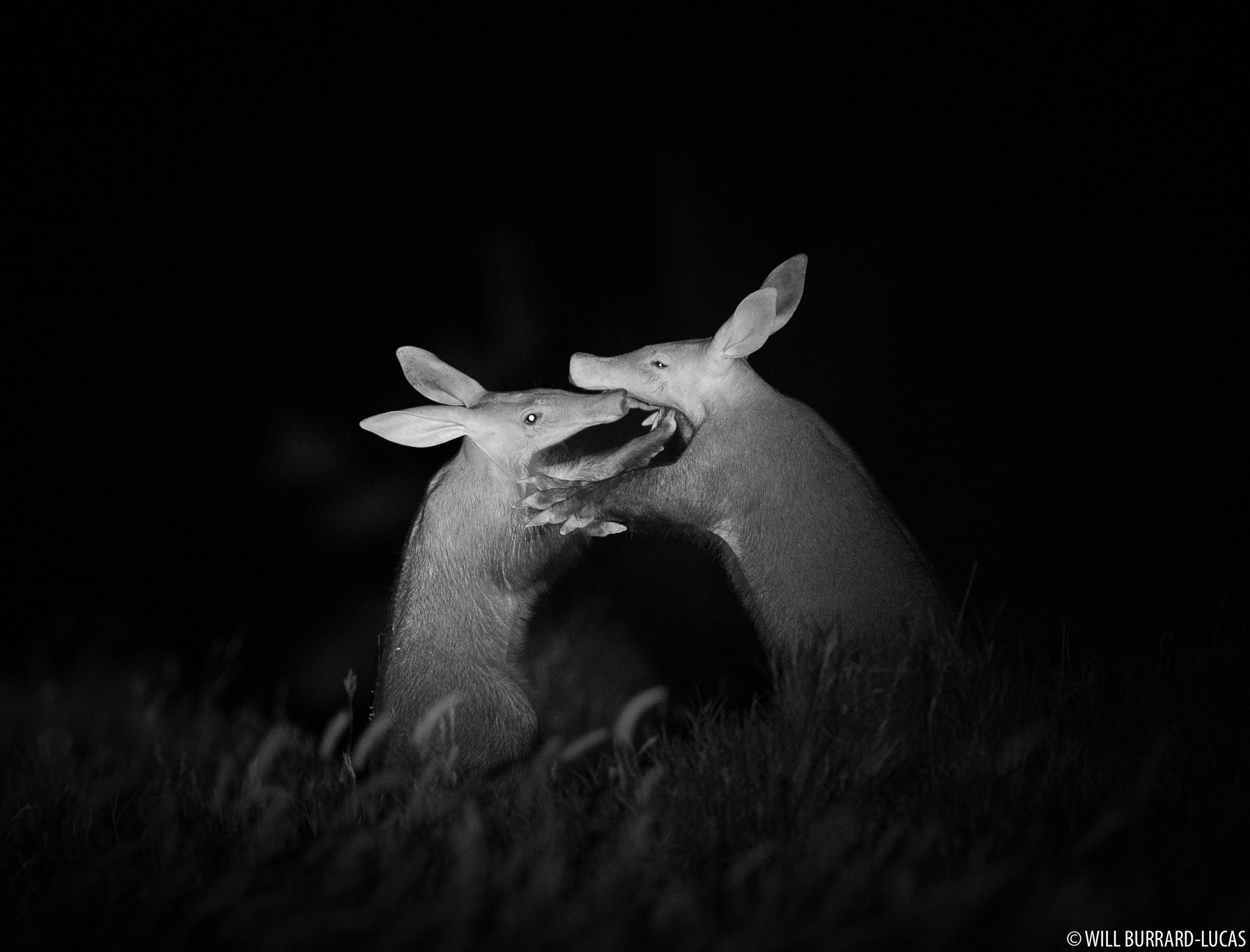
Aardvark Greeting, 2014
The African night sky is spectacular and inspired me to capture images that would show animals under a carpet of stars. BeetleCam turned out to be the perfect tool to achieve this, as the ground-level perspective meant that I could frame animals with the sky behind them.
I first pulled-off a shot like this in 2013, on a clear, moonless night in Zambia. It was while we were sitting around the campfire one evening that we heard lions on a kill nearby and went to investigate. I realised this was the perfect opportunity to try to capture the star image I had envisaged.
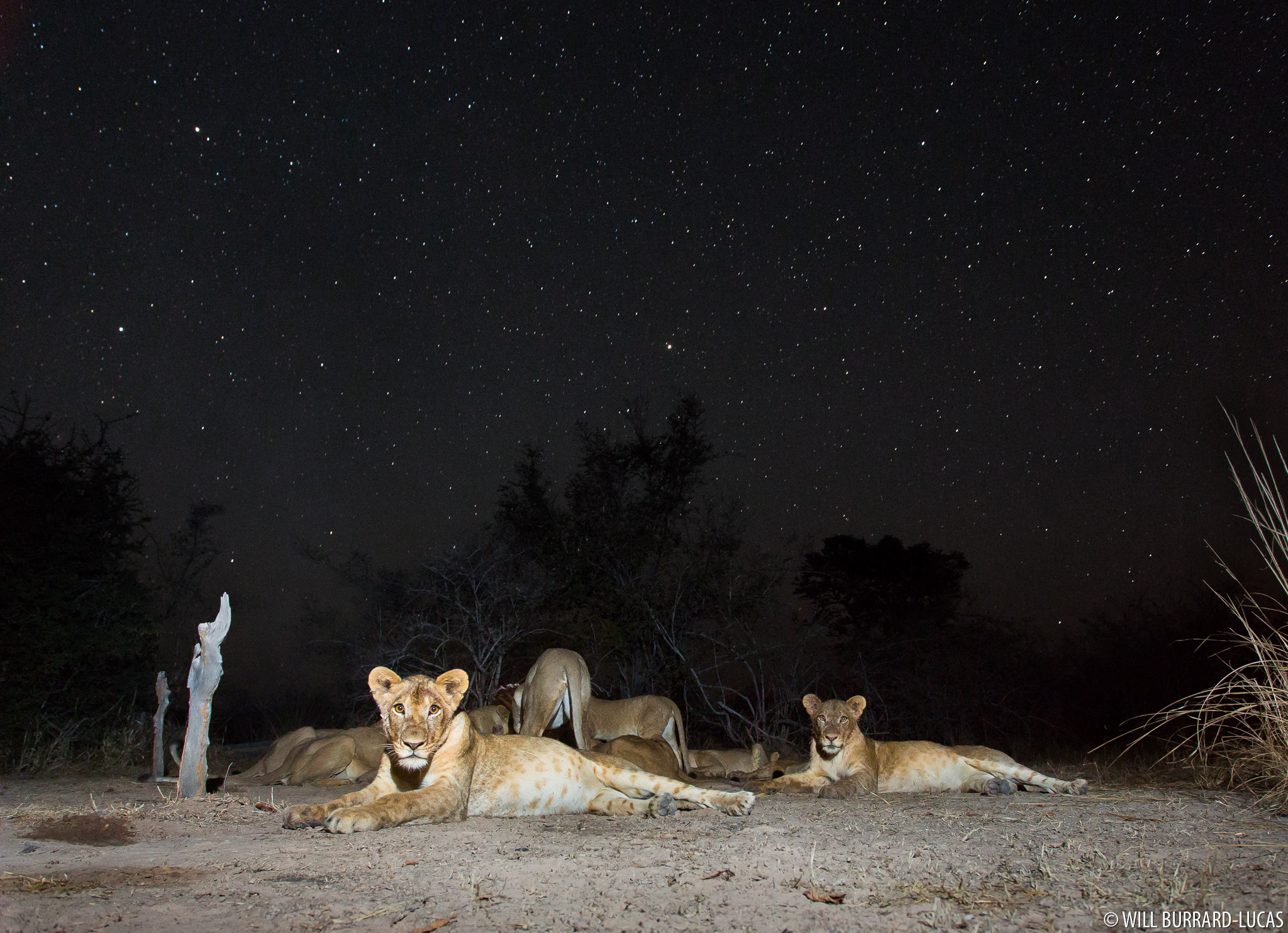
Lions at Night, Zambia, 2013
Stars are very dim, so the first challenge is to balance the exposure of an artificially illuminated foreground with the stars in order to capture the scene in a single exposure. Even with a very high ISO and wide aperture, a long exposure time of at least 10 seconds is required to expose stars. An off-camera flash exposes the lions at the start of the exposure. I then leave the shutter open after the flash so that the stars expose. As long as no light hits the foreground after the flash, nothing else exposes to cause ghosting and the animals remain sharp (even if they move after the flash). However, this technique is only possible when there is no moonlight and all other light sources (such as the lights in my vehicle) are completely extinguished. While the photo is exposing, I am thus in complete darkness, in an open vehicle, next to pride of lions, which can sometimes feel a bit unnerving. Occasionally this method results in a bright star exposing through the body of the animal, but this is only really noticeable if you know to look for it.
The camera can not autofocus in the pitch black, so I need to set the focus manually before deploying BeetleCam and then judge the distance between the animal and the buggy by eye. In practice this is quite difficult and is the part that goes wrong most often.
Having proved the concept in 2013, I later refined the BeetleCam star technique in 2015, whilst photographing lions and hyenas at night in Liuwa Plain National Park. For me, photographing essentially nocturnal animals like this, shows them in their true element, when they really are masters of their realm.
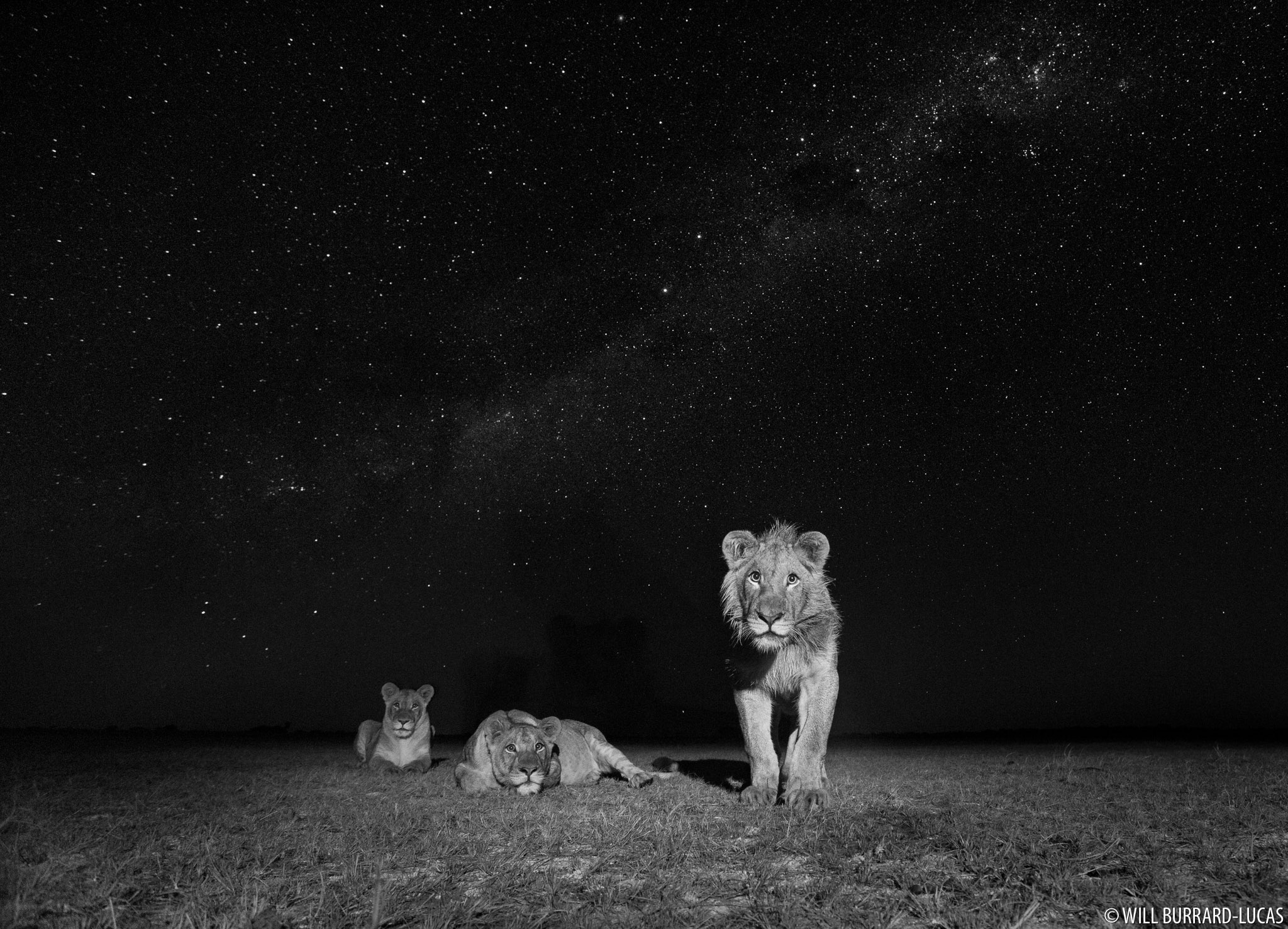
Camera Traps
After capturing photos of animals under the stars with BeetleCam, I went on to apply the same technique with my camera traps. There is a lot that can go wrong when setting a camera trap to expose stars, but if everything comes together, similar results to the BeetleCam technique can be achieved. Again though, this technique is only possible when the moon is below the horizon. I used a camera trap to capture this photograph of a black rhino under the stars in Kenya. I have also applied this technique extensively in my ongoing Black Panther project.
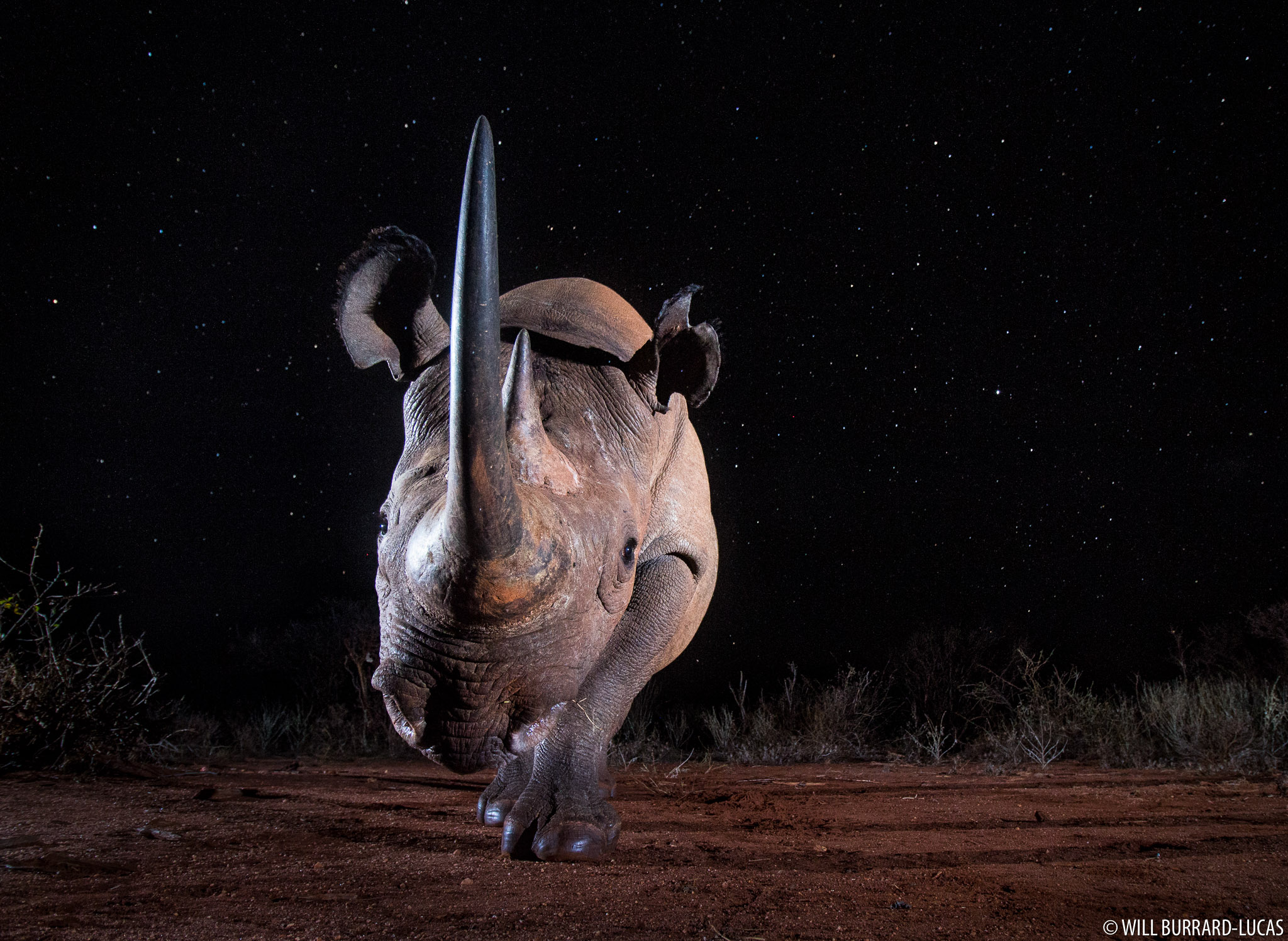
Star Trails
Using a similar method to the one described above, it is also possible to leave the shutter open for much longer after the initial flash – for example 40 minutes or an hour. In this way, it is possible to capture star trails and a sharp subject in a single exposure. For example, this is a single 40-minute exposure of crocodile in North Luangwa, Zambia. I actually painted the crocodile with a torch at the start of the exposure, rather than using a speedlite flash.
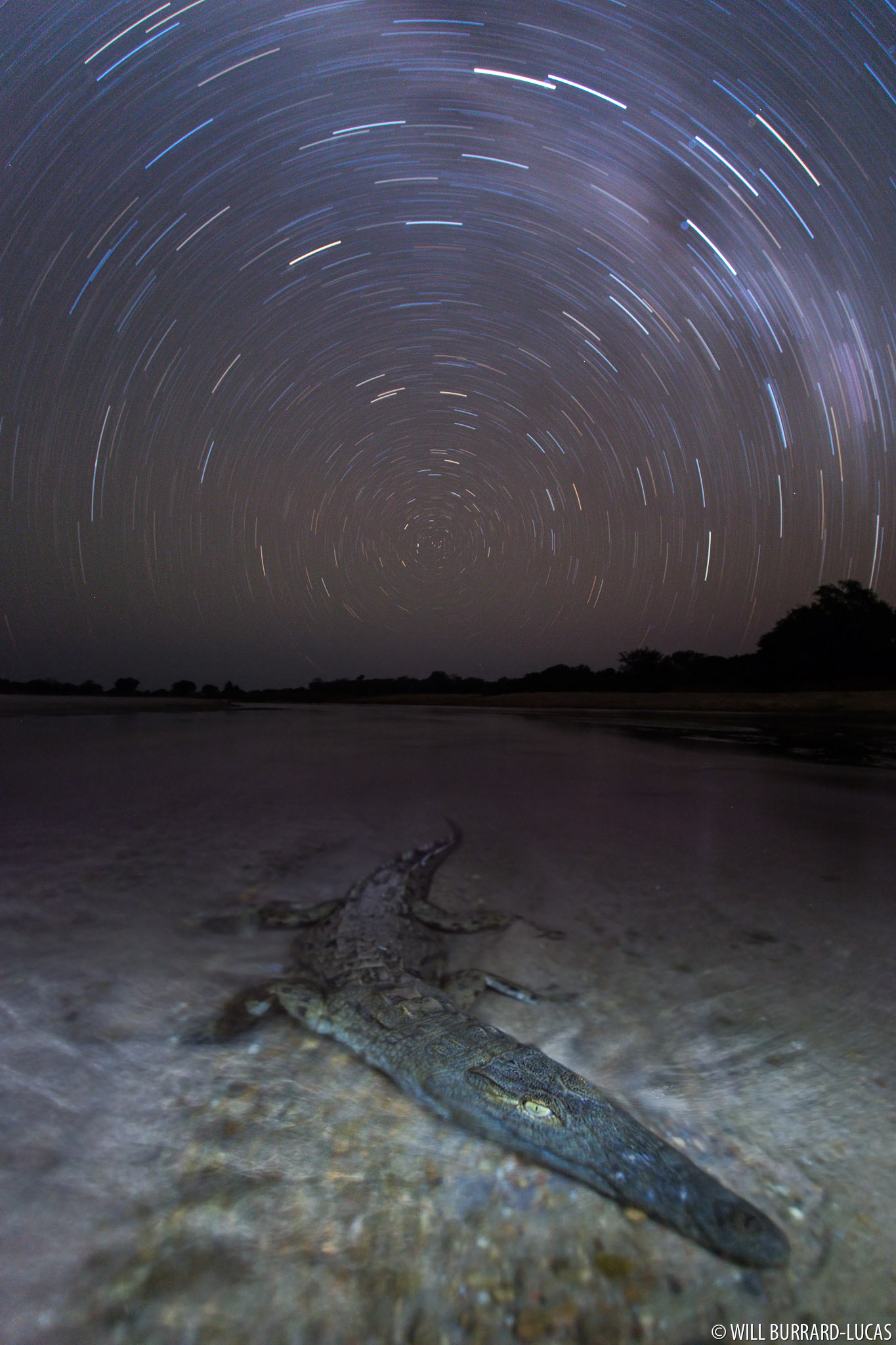
Crocodile at Night, Zambia, 2013
A Blank Canvas
The darkness of night allows complete creative control over the lighting. Lighting can be made to look natural, like moonlight, or dramatic, as if taken in a studio. The creative possibilities are endless. The photograph below shows rain, not stars. I placed an off-camera flash behind the subject, pointing back at me, in order to illuminate the raindrops.
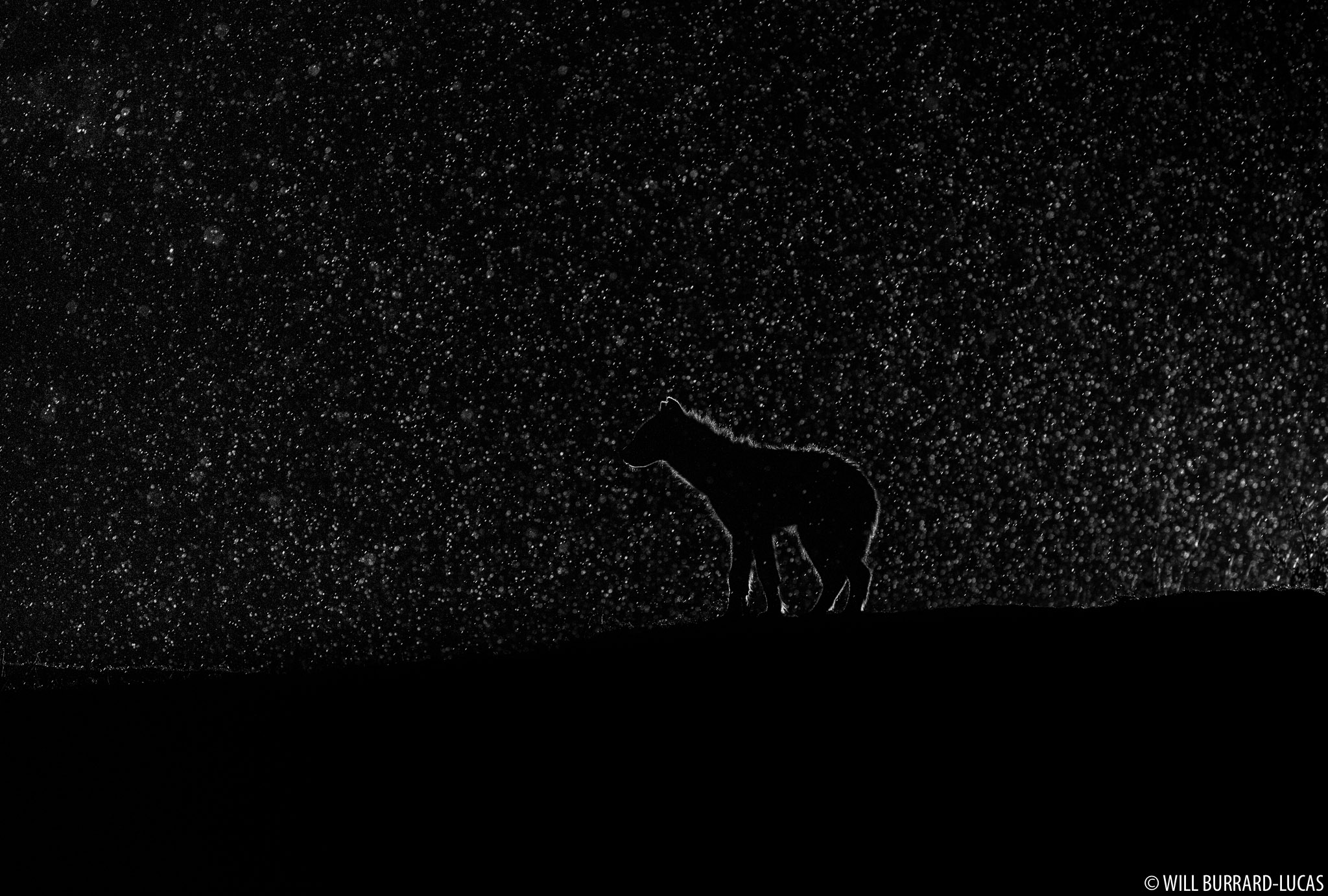
Hyena on a rainy night, Zambia, 2015
Black Panther
For me, the animal that embodies the night like no other is the black panther (melanistic leopard). I have applied all of the techniques and equipment that I have developed over more than 10 years in order to capture dramatic nighttime images of a wild black leopard in Kenya. You can find out more about my black leopard project here.
